Amae (甘え) – a Japanese word unveiling a feeling the West leaves unnamed
The psychological amniotic fluid
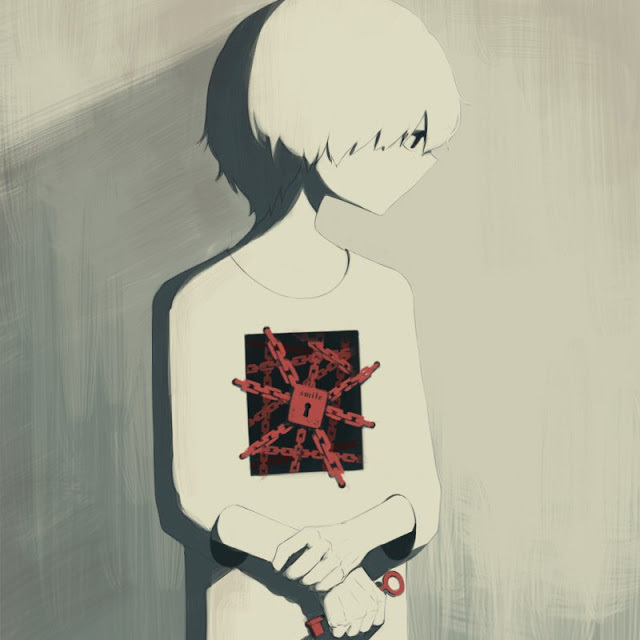
A child buries their face into their mother’s chest, asking her to hand them the cup of water that’s right beside them. A girl asks her partner to run into the rain to fetch her favorite dessert, though she doesn’t truly crave it. A younger colleague at work helplessly asks for assistance in correcting a report. What links these situations together? The same feeling — subtle, quiet, and yet omnipresent — which the Japanese have captured in a single word.


Paradoxically, although the word is considered uniquely Japanese, the emotional mechanism behind it is universal. Japan simply dared to do what the West has not — to give a name to our primordial longing: the desire to be accepted exactly as we are. Let us then look closer at “amae” — what do its kanji reveal, what do psychologists say, and what does life itself show us?
What is “amae”?
A small boy returns from kindergarten, dragging his feet, throws his backpack into a corner, and climbs onto his mother’s lap without a word. He doesn’t say he’s tired, he doesn’t say his friends teased him. He doesn’t need to. He knows his silent embrace will be accepted, that he’ll receive exactly what he needs — presence, warmth, understanding.

A man in his twenties, new to a Tokyo corporation, hands over a half-amateurish report (he doesn’t have much experience yet) to his senior colleague, knowing it will be corrected without complaint. Not because it is the senior’s duty, but because between them exists a subtle, unspoken understanding: “you can count on me, even if you don’t ask outright.”
What ties these three scenes together is a particular kind of feeling. One that is difficult to define precisely in European languages, for it is neither solely love, nor solely dependence, nor manipulation, nor obligation — though it contains traces of them all. In Japanese, however, there exists a word that captures this experience with extraordinary precision: “amae” (甘え).

There is something deeply Japanese in this — for Japanese culture has given this experience its own language, embedding it within social norms and relationships. For the psychoanalyst Doi Takeo, author of the classic book “甘えの構造” (“The Anatomy of Dependence”), amae is one of the pillars of the Japanese psyche: it begins in the relationship between infant and mother, but does not vanish with age — it permeates the entire fabric of social life, shaping family ties, romantic bonds, friendships, and even workplace dynamics.
And yet, amae is not exclusively Japanese. The need to be accepted “just as we are,” with our weaknesses, without masks or explanations, is a profoundly universal experience. It allows us to feel safe, to know there are people we can trust unconditionally, without needing to negotiate our worth. While European languages lack a single word that captures it as precisely as amae, we nevertheless know this state intimately — in moments of childhood embrace, in a partnership rooted in trust, in a friendship that “reads us” without words.
Amae is therefore both a “sweet dependence” and a “quiet certainty of being loved.” It carries within it a request that never needs to be spoken aloud. It is a soft, invisible bridge between people — built on intuition, empathy, and mutual understanding. Japan has given it a name and made it one of the keys to social harmony, but its echo can be found anywhere someone allows themselves to be vulnerable, trusting they will be met not with rejection, but with kindness.
Kanji and etymology
The word amae (甘え) seems simple, yet we must listen closely to catch its subtleties and nuances. To truly understand what amae is, we must first examine its construction and then trace the path it has taken — from an unassuming everyday word to a central concept in Japanese social psychology.
Structure and Semantics of the Word “甘え”
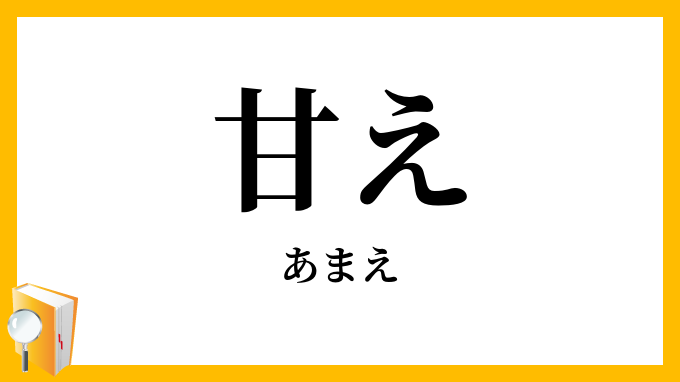

- sweetness — in the context of taste (amami, 甘味 – “sweetness”),
- gentleness — in reference to personality traits or climate,
- indulgence — especially significant for the concept of amae, since amai (甘い) can mean “sweet” in flavor but also “naive,” “soft,” or “overly lenient” when judging people or situations. One has to “feel” the context to catch the nuance.
Here, a subtle shift in meaning already appears: from sensual pleasure to emotional softness. This layered quality allowed the word amae to become the vessel for expressing a delicate, often unspoken plea for care, affection, or forgiveness.
The Word Family and Nuances of Meaning

- 甘える (amaeru) — the verb from which the noun amae is derived. It refers to trusting, implicitly requesting behavior: “to rely on someone’s indulgence,” “to allow oneself a childlike dependence,” or “to act as though another’s care were a given.”
- 甘やかす (amayakasu) — “to spoil,” “to indulge excessively.” Here, the relationship is more one-sided, highlighting the caregiver’s action.
- 甘えん坊 (amaenbō) — an affectionate term for a child (or even an adult) who is particularly “clingy,” constantly seeking attention and affection.
- 甘え上手 (amae-jōzu) — someone who “knows how to use amae well,” skillfully and discreetly requesting support, winning others’ sympathy and care. This can carry a negative nuance — implying manipulation — but not necessarily.
- 甘口 (ama-kuchi) — literally “sweet mouth,” but in practice refers to a mild, non-salty flavor in sauces or sake; figuratively, it describes a “gentle tone of speech.”
This spectrum of words shows how deeply amae permeates Japanese everyday life: from children’s behaviors to the dynamics of romantic relationships, to subtle signals within hierarchical social structures.
The Etymology of the Concept and Its Path to Psychology

In 1971, he published his groundbreaking book “甘えの構造” (The Anatomy of Dependence), in which he proposed that amae is one of the foundations of interpersonal relationships in Japan. Doi argued that the prototype of amae is born within the infant’s relationship with the mother but does not disappear in adulthood — on the contrary, it permeates all areas of social life: friendships, workplace relationships, and even international affairs.
In 1973, the English translation by John Bester was published, sparking global discussion about amae. Some scholars regarded the concept as revolutionary, while others criticized it as being too deeply rooted in the ideology of nihonjinron (theories of “Japanese uniqueness”). Nevertheless, thanks to this book, amae entered the international vocabulary of cross-cultural psychology and remains a point of reference in studies of relational dynamics in Japan to this day.
In this way, the simple character 甘, which once evoked the sweetness of fruit on the tongue, became the vessel for an extraordinarily subtle idea: an emotional softness, trust, and dependence, interwoven with Japan’s culture of harmony and relationships — yet whose echo resonates within us as well.
The Psychology of Amae According to Doi Takeo
The Anatomy of Dependence
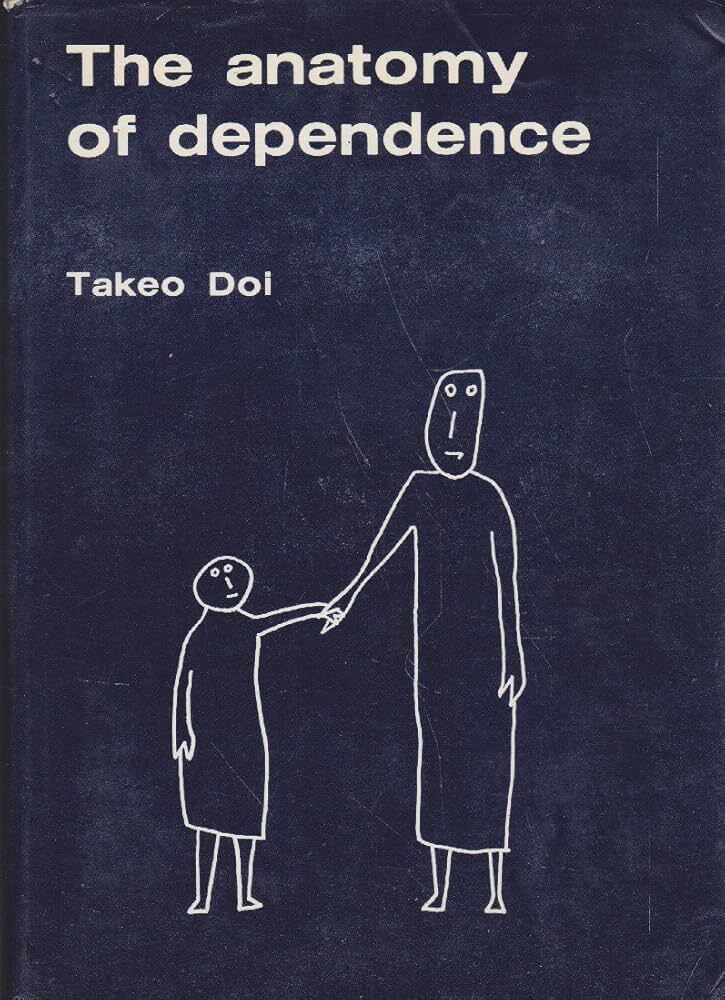
According to Doi, the origin of amae lies in the most primal relationship in human life — that between the infant and the mother. The newborn, entirely dependent on its caregiver, does not yet understand that the mother is a separate being. Only later does the child become aware of this separation, but along with that awareness arises something new: a yearning to return to the original state of unity, complete acceptance, and unconditional care.
Doi regarded this moment as the prototype of amae. It is not merely about simple dependence or biological need — it is an emotional longing, a subtle, deeply rooted desire “to be taken into the arms of the world,” to be protected and loved without needing to “earn” it.
Moreover, according to Doi, this feeling does not vanish with maturity. In Japanese culture, it is socially accepted — even expected — that amae will accompany a person throughout life: in romantic relationships, friendships, workplace bonds, and even political dynamics.
“Sweet Dependence” in Adult Life
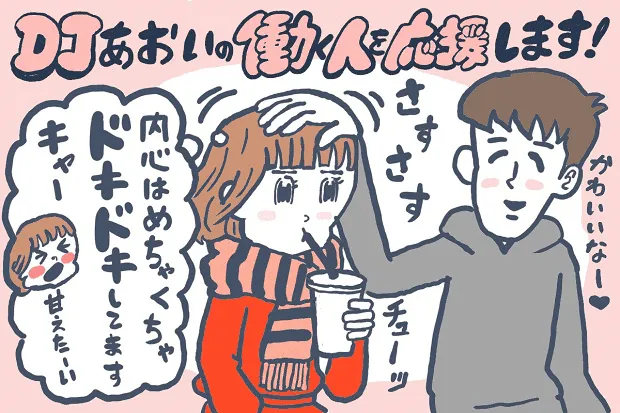
All these situations share a single foundation: the belief that someone will accept us as we are, forgive us, and care for us — even when our behavior exceeds what is “appropriate.”
Doi argued that this soft, “sweet dependence” is the glue that binds Japanese social relationships. Amae allows people to express weakness and build intimacy, grounding their connections in trust and empathy. At the same time, however, it is a double-edged sword. Excessive amae can lead to emotional immaturity, dependency on others’ approval, and an inability to stand independently.
Amae and the Social Fabric: honne, tatemae, sasshi, enryo
Doi saw amae not only in private relationships but also within the very structure of Japanese society. The way people communicate their needs, build relationships, and avoid conflicts — according to him, all of it is permeated by amae.
- Honne (本音) and tatemae (建前) — one’s true, inner feelings versus the socially acceptable façade. Doi observed that amae is often “unspoken” yet present between the lines, encrypted within hidden honne, which does not need to be verbalized because the other person “should” be able to sense and accept it.
- Sasshi (察し) — “intuitive understanding,” a subtle empathy, the ability to sense unspoken needs. Within a culture of amae, this skill is essential: for someone to “trust in another’s indulgence,” the other person must be capable of perceiving it without being asked directly.

Through these mechanisms, amae becomes an invisible glue holding society together. It is rarely expressed outright but lives within gestures, silences, glances, and unspoken implications.
In The Anatomy of Dependence, Doi argued that although the longing to be loved is universal, only Japan developed a language that transformed this need into something socially accepted. In Western cultures, children are taught independence from an early age, and an adult who displays overt dependency is often perceived as immature. In Japan (and perhaps in some other cultures), however, amae is not only free of stigma — it is often valued, seen as a sign of trust and the depth of a relationship. Doi did not claim that amae is exclusively Japanese; rather, he believed that what remains unnamed in other cultures was, in Japan, given a word, social acceptance, and cultural value.
Amae can be warmth and trust — a glue that builds community. But it can also become a mechanism of escape, an overdependence on others’ acceptance and care. Thus Doi left us with a paradox: amae is at once a child’s longing and an adult’s tool for shaping bonds; it is intimacy, yet also a potential sign of immaturity.
Researchers After Doi Takeo
When Doi Takeo published his book “甘えの構造” (The Anatomy of Dependence) in 1971, he gave language to a phenomenon that had always existed in everyday experience but had rarely been consciously reflected upon. Yet his thesis about the central role of amae in the Japanese psyche became both an inspiration and a flashpoint. Since then, psychologists, sociologists, and anthropologists — both in Japan and the West — have debated what amae truly is: a specifically Japanese phenomenon, or rather a universal experience that, only in Japan, has acquired its own word and special significance.
Yamaguchi and Ariizumi: “Presumed Acceptance”
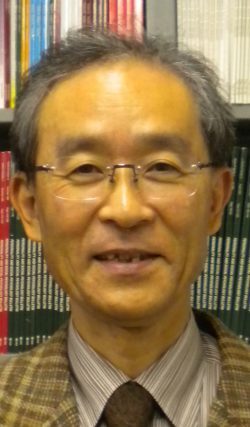
The key shift in their approach lies in the focus: unlike the Western understanding of dependence, amae does not imply surrendering control to the other person. Quite the opposite — the initiator of amae, the one making the request, gains an advantage over the recipient, because they operate under the assumption that the other party will not refuse.
Imagine a ten-year-old boy who — though perfectly capable of dressing himself — asks his mother to help him put on his shirt. To an outside observer, this behavior may seem inappropriate for his age. But within the logic of amae, the request functions as a test of closeness. The boy is not expressing a need to get dressed so much as a need to feel accepted and loved.
Yamaguchi identifies three primary functions of amae:
- Fulfilling a need — the initiator genuinely asks for something and assumes the request will be accepted.
- “Testing love” — the request serves as a pretext to verify whether the other person truly loves and accepts them.
- Strengthening closeness — amae works like a ritual of confirming bonds; even if the request is “irrational,” its acceptance deepens the sense of connectedness.
In this sense, amae introduces a subtle dynamic of power: apparent dependence becomes a tool of influence.
Amae as a Universal Phenomenon

The results were surprising. Both Japanese and American participants responded similarly: in many cases, the recipients of such requests experienced positive emotions — they felt valued and needed. Only when the requests became excessively frequent or manipulative did recipients begin to feel irritation or a sense of being exploited.
The conclusions were significant: behaviors resembling amae exist outside Japan as well, but there is no single word to organize and legitimize them. Japan, therefore, is unique not because it experiences amae, but because it has given it a name, meaning, and social acceptance.
“Self-amae”: Indulging Oneself

It could be a student procrastinating on writing a paper despite knowing the deadline is near, or an employee putting off an important responsibility, carried by a vague, background trust that “someone” will help or that “something” will resolve itself.
Behrens distinguishes between affective motivation (a desire for closeness and acceptance) and instrumental-manipulative motivation (using an emotional bond to achieve a goal). This distinction is crucial because it shows that amae is not morally unambiguous — it can be warm and trusting but can also become a deliberate strategy.
Some scholars, particularly those critical of the nihonjinron (日本人論) discourse on “Japanese uniqueness,” have argued that Doi generalized too much by presenting amae as something fundamentally Japanese. They point out that:
- Many communities living within Japan — such as the Ainu or the Ryukyuans (Okinawa, more here: Kingdom of Ryūkyū: Where Karate Was Born, Religion Belonged to Women, and Longevity Was the Norm) — form relationships differently, and amae is not necessarily central to their cultures.
- Similar mechanisms exist globally, even if they have not been named explicitly.
- Doi’s analysis largely reflected the urban, educated, middle-class family model of the 1960s and 1970s rather than the entirety of Japanese society.
Spheres of Life: How Amae Works in Practice
Family — the Safe Harbor of “Sweet Dependence”
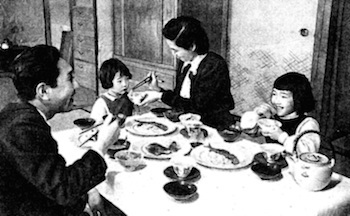
A child asks for things that, in other contexts, might be seen as excessive: to be fed, dressed, or cuddled, even though they can do all these things themselves. In Japan, however, such dependence is accepted and even nurtured. Psychologists note that amae within the family acts as an emotional cement — through the act of asking and the granting of requests, a subtle network of reaffirmed bonds is formed.

From this relational matrix arises the template for adult bonds: what we experience in childhood shapes how we later trust, ask, and test the boundaries of closeness. In Japan, this “sweet dependence” does not end with maturity — it merely changes its addressee.
Love, Friendship, and the Play of Tenderness — Amae in Equal Relationships

Imagine the scene: a woman asks her partner to go out into heavy rain to fetch her favorite dessert, even though she does not particularly crave it. In the background, the dessert itself is not the point — what matters is whether her request will be fulfilled. The partner who goes into the rain is not merely bringing back sweets; he is affirming his love.
Such “testing” can be tender and innocent but requires a mutual understanding of boundaries. Amae functions only when there is shared permission for this kind of emotional game. Without it, it easily slips into manipulation.

Here, amae also connects with the concept of wa (和), or social harmony. In a culture where open conflict is strongly discouraged, amae becomes a delicate tool of emotional negotiation — instead of demanding, one asks softly, trusting in the other’s willingness to respond.
Amae at Work — Nurturing Hierarchies or Dangerous Oversimplifications?
Amae does not end in the private sphere. In Japanese offices and factories, it also permeates professional relationships, especially within hierarchical structures (and in Japan, most structures are indeed hierarchical). A younger employee may express amae toward an older colleague or supervisor, counting on their guidance, indulgence, and protection.
Everyday workplace etiquette even contains a special phrase: 「お言葉に甘える」 (okotoba ni amaeru), literally “I will indulge in your words.” It is used when someone offers help, and we — with gratitude but also within a subtle cultural permission — accept it. This shows that amae is not merely an emotion but also a coded form of communication.

Crucially, amae at work carries an inherent ambiguity. On the one hand, it strengthens bonds among employees, fostering a sense of community. On the other hand, in a culture where gaman (我慢) — endurance and self-discipline — is highly valued, excessive reliance on others’ indulgence can be perceived negatively. As a result, Japan has developed a complex system of norms and contextual cues that help distinguish when amae is acceptable and when it becomes an overreach.
Amae, Attachment, and the Universal Hunger for Closeness

In Western models, the goal is the gradual development of the child’s autonomy. Attachment serves as a “secure base,” but independence is the ultimate aim. In Japan, by contrast, dependence is not viewed as a problem to be overcome. Amae is seen as natural, healthy, and enduring — a relational state in which one can briefly “set down the burden of adulthood” and allow oneself to return to the role of someone loved unconditionally.
Empirical studies show that although behaviors resembling amae exist in cultures that lack a name for it, their emotional evaluation often differs. In the U.S. or Europe, adult dependence can evoke discomfort or a sense of weakness, whereas in Japan, being “a burden” — when temporary and mutually accepted — can serve as a proof of closeness.
A Developmental and Clinical Perspective

According to Watanabe, amae is not merely the desire to be loved or to trustingly rely on someone close. It is also a fundamental psychophysical state, one in which the sense of safety and the possibility of healthy development are formed. She describes this through the metaphor of a “psychological amniotic fluid” — an invisible environment created by authentic, responsive, and tender interactions between caregiver and child.

“Authenticity” — a key term in Watanabe’s work — is essential here. As developmental psychology research shows (notably by Colwyn Trevarthen and Daniel Stern), infants can intuitively sense emotional falsehood. If a caregiver performs mechanical gestures while their attention and emotions are elsewhere, the child perceives the absence of genuine connection. Watanabe argues that amae can develop only when the caregiver is truly present — emotionally, physically, and mentally.
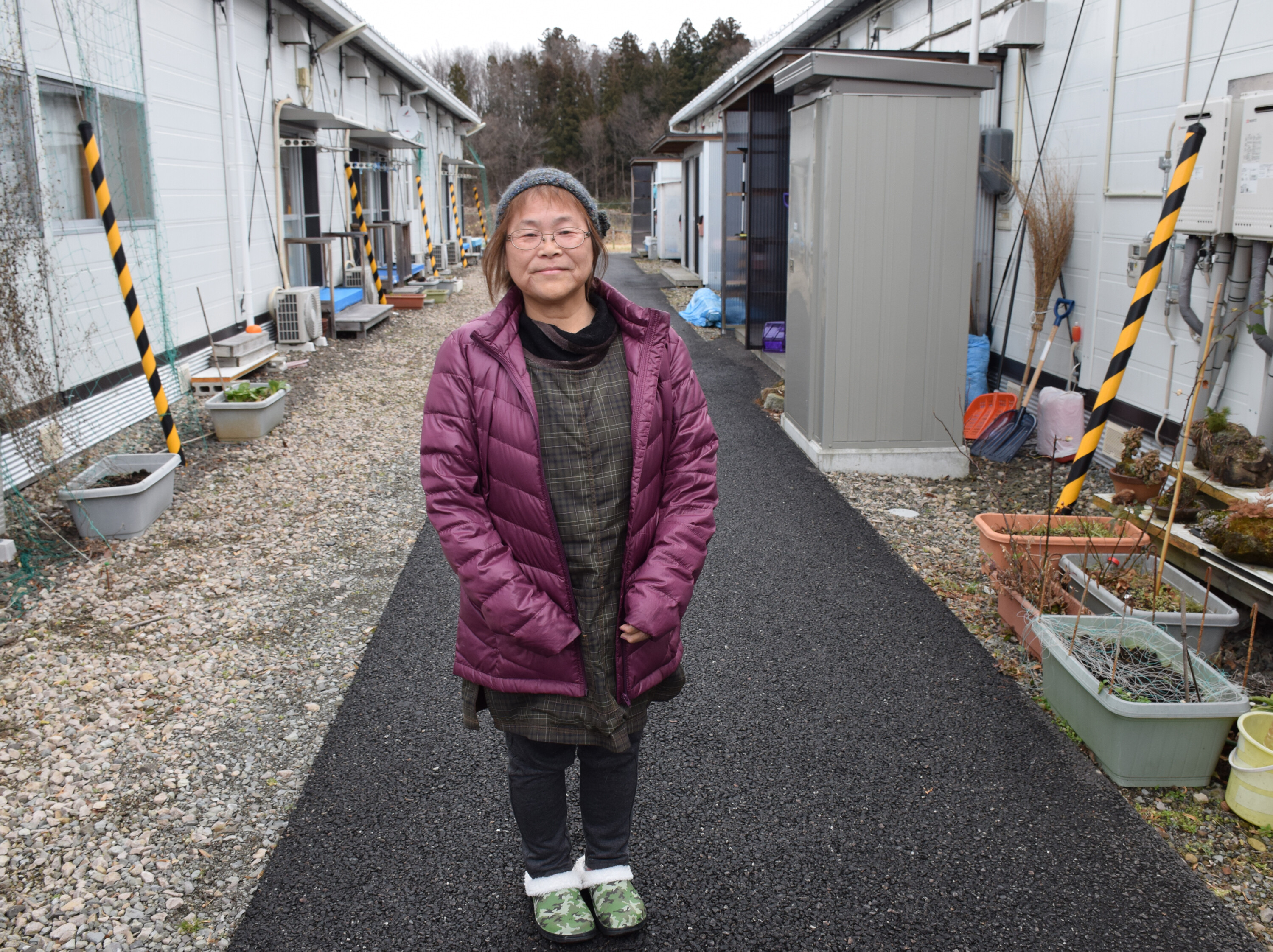


In this framing, amae ceases to be merely a sociological category explaining “Japaneseness.” It becomes a universal psychic experience, rooted in the biology of bonding and the human need to be heard, accepted, and protected. The Japanese lens simply draws it into focus and gives language to what remains silent and implicit elsewhere.
Not Always a Weakness

In this sense, amae reveals something fundamental about us as a species. It shows that our independence, so highly prized in Western culture, is only one possible way of living. Beneath the surface of individualism lies a hunger for symbiotic safety — the need to find in someone what Hisako Watanabe so beautifully called “psychological amniotic fluid.” The child burrowing into their mother’s embrace, the partner subtly testing the other’s patience, the employee trusting their supervisor enough to expose vulnerability — all these gestures are traces of the same longing. What Japan did differently was give this longing a name. And once something has a name, it becomes more conscious, harder to push into the unconscious.
Perhaps this is why amae is so fascinating. It not only explains many nuances of the Japanese psyche but also invites those of us outside Japan to examine our own relationships. How often do we allow ourselves to be vulnerable with others? How often do we trust that someone will receive us in our fragility? And how often do we assume, from the start, that we must be strong, self-sufficient, and ask for nothing?
Amae reminds us that dependence is not always weakness — it can also be the foundation of love, connection, and community. In an age of global individualism, when we are learning solitude almost as a virtue, this quiet, “sweet dependence” may be one of the keys to rediscovering a fuller, more human experience.
>> SEE ALSO SIMILAR ARTICLES:
Not the right smile, not the right pause. The grammar of silence in Japan’s high-context culture
Kanji Characters: Hito and Jin – What Does It Mean to Be Human?
"Strong Japanese Women"
see book by the author
of the page
未開 ソビエライ
An enthusiast of Asian culture with a deep appreciation for the diverse philosophies of the world. By education, a psychologist and philologist specializing in Korean studies. At heart, a programmer (primarily for Android) and a passionate technology enthusiast, as well as a practitioner of Zen and mono no aware. In moments of tranquility, adheres to a disciplined lifestyle, firmly believing that perseverance, continuous personal growth, and dedication to one's passions are the wisest paths in life. Author of the book "Strong Women of Japan" (>>see more)
Personal motto:
"The most powerful force in the universe is compound interest." - Albert Einstein (probably)
Mike Soray
(aka Michał Sobieraj)
未開 ソビエライ
An enthusiast of Asian culture with a deep appreciation for the diverse philosophies of the world. By education, a psychologist and philologist specializing in Korean studies. At heart, a programmer (primarily for Android) and a passionate technology enthusiast, as well as a practitioner of Zen and mono no aware. In moments of tranquility, adheres to a disciplined lifestyle, firmly believing that perseverance, continuous personal growth, and dedication to one's passions are the wisest paths in life. Author of the book "Strong Women of Japan" (>>see more)
Personal motto:
"The most powerful force in the universe is compound interest." - Albert Einstein (probably)
Mike Soray
(aka Michał Sobieraj)
Write us...
Ciechanów, Polska
dr.imyon@gmail.com
___________________
inari.smart
Would you like to share your thoughts or feedback about our website or app? Leave us a message, and we’ll get back to you quickly. We value your perspective!







